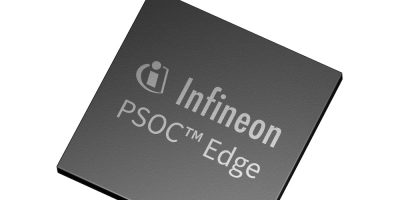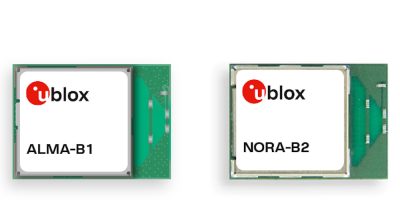Infineon has released details of its new PSOC Edge family of microcontrollers (MCUs) optimised for machine learning (ML) applications. The three new PSOC Edge MCU series, E81, E83 and E84 offer a scalable and compatible range of performance, features, and memory options. They are all supported with comprehensive system design tools and software that enable developers to quickly move from concept to product and bring new ML-enabled Internet of Thing (IoT), consumer and industrial applications to market.
“Next-generation IoT edge devices continue to require more performance without compromising power,” said Steve Tateosian, SVP of Industrial MCUs, IoT, Wireless and Compute Business, Infineon. “Infineon’s innovative new PSOC Edge E8 series of devices use ML capabilities to compute responsive AI while balancing performance and power requirements and providing embedded security for connected home devices, wearables, and industrial applications. As a leading provider of MCUs, we are committed to delivering solutions that extend the capabilities of future IoT systems.”
Infineon’s new PSOC Edge E81, E83 and E84 microcontrollers are based on the high-performance Arm Cortex-M55, including Arm Helium DSP support paired with Arm Ethos-U55, and Cortex-M33 paired with Infineon’s ultra-low power NNLite — a proprietary hardware accelerator intended to accelerate neural networks. In addition, all three series support extensive peripheral sets, on chip memory, robust hardware security features and a variety of connectivity options including USB HS/FS with PHY CAN, Ethernet, WiFi 6, BTBLE and Matter. The PSOC Edge E81 utilises the Arm Helium DSP technology along with Infineon NNLite Neural Network (NN) accelerator. The PSOC Edge E83 and E84 include the Arm Ethos-U55 micro-NPU processor, which provides a 480x improvement in ML performance compared to existing Cortex-M systems, and they support the Infineon NNlite neural network accelerator for ML applications in the low-power compute domain.
Target applications for the PSOC Edge E8x series include Human Machine Interface (HMI) in appliances and industrial devices, smart home and security systems, robotics, and wearables. All three series support voice/audio sensing for activation and control, while the E83 and E84 MCUs deliver increased capabilities for advanced HMI implementations, including ML-based wake-up, and vision-based position detection and face/object recognition. The PSOC Edge E84 series adds low-power graphics display (up to 1028×768) to the extensive feature set.
PSOC Edge E8 MCUs offer designers a full family of system and full software compatible devices. Hardware design support includes an evaluation base board with Arduino expansion header, sensor suite, BLE connectivity for provisioning and Wi-Fi for smart phone and cloud connectivity.
As with all Infineon MCUs, the series is supported by Infineon’s ModusToolbox software platform, which provides a collection of development tools, libraries, and embedded runtime assets for a flexible and comprehensive development experience. ModusToolbox supports a wide range of use cases including consumer IoT, industrial, smart home, and wearables.
Imagimob Studio is an Edge AI development platform, integrated into ModusToolbox, that delivers end-to-end ML development capability, from data in to model deployed. Starter projects and Imagimob’s Ready Models make it simple to get started. When used with PSOC Edge, Imagimob makes it possible to rapidly build and deploy state of the art machine learning models for the edge.







